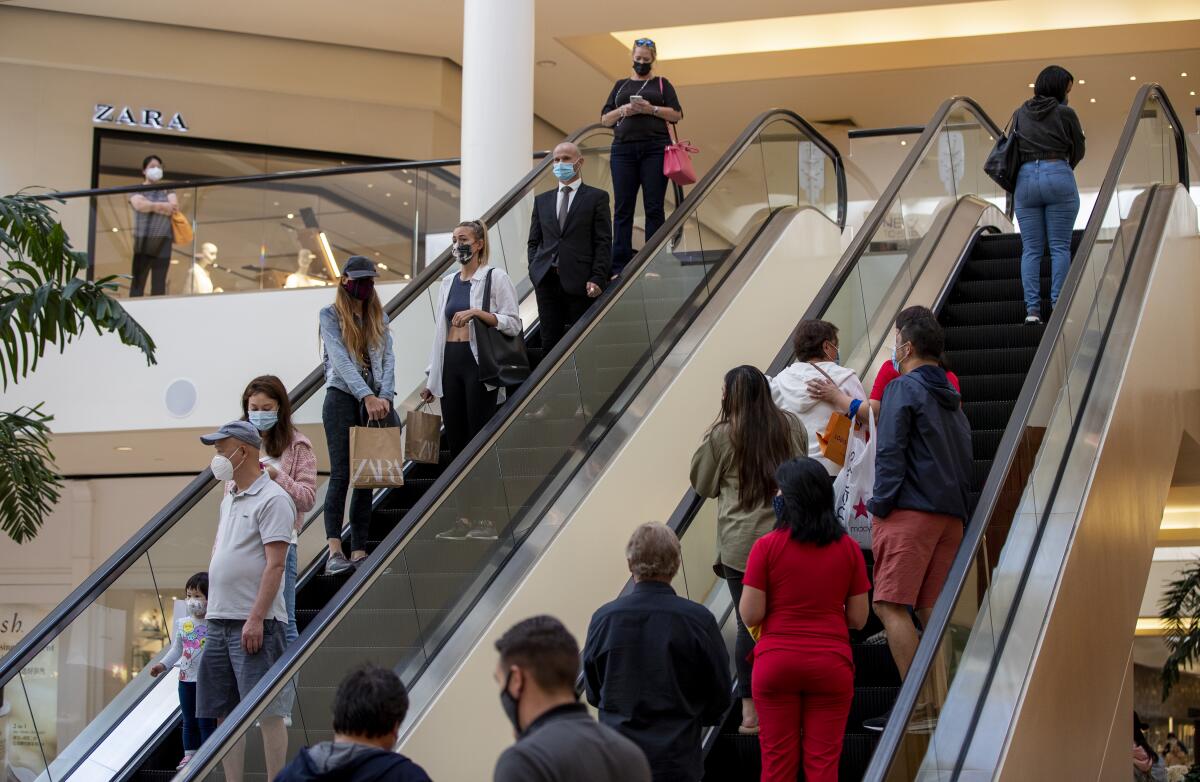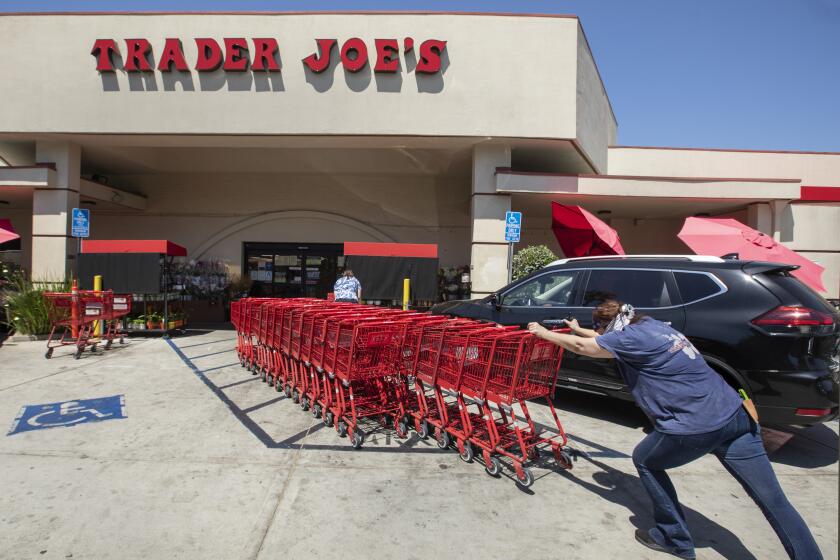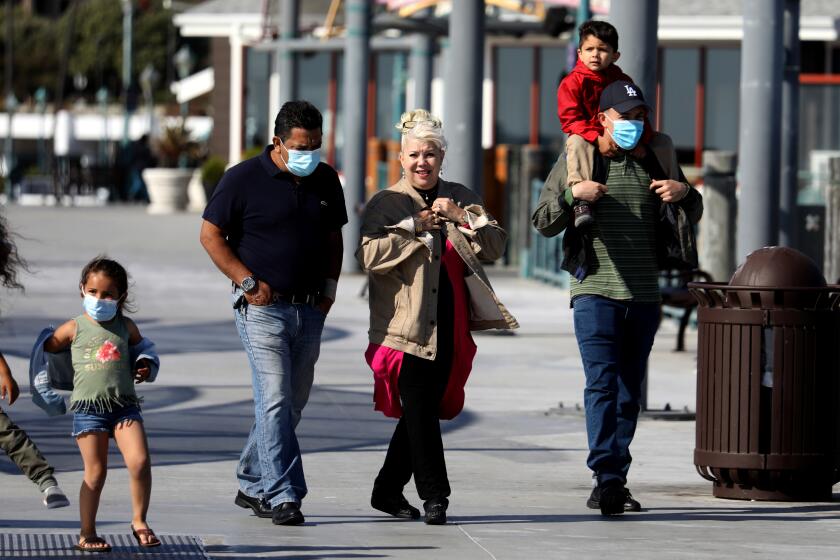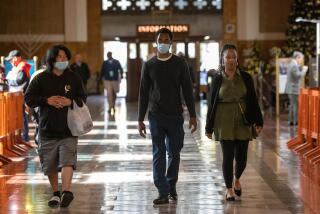Some fear the CDC is moving too fast in lifting COVID-19 mask rules for the vaccinated

Some health experts are questioning whether federal officials moved too fast in relaxing mask recommendations that would allow for people fully vaccinated against COVID-19 to shed face coverings in most indoor and outdoor settings. And they are suggesting California and local leaders move a bit more cautiously in easing mask mandates.
Dr. John Swartzberg, a clinical professor emeritus of the UC Berkeley School of Public Health’s infectious diseases division, said, “There is good science to support changing our policy. On the other hand, I’m surprised they came out with it this soon. I would’ve liked to have had another month under my belt of seeing the numbers continue to come down.”
If California does begin allowing fully vaccinated people to be maskless in stores, who would be checking to see if those without masks were really vaccinated? Will supermarkets really be interested in checking vaccine cards at the entrance?
“I can’t see grocery stores confirming that you’re vaccinated. It just won’t happen,” Swartzberg said.
The United Food and Commercial Workers union, which represents 1.3 million essential food and retail workers, also questioned the CDC’s move.
“While we all share the desire to return to a mask-free normal, today’s CDC guidance is confusing and fails to consider how it will impact essential workers who face frequent exposure to individuals who are not vaccinated and refuse to wear masks,” Marc Perrone, the union’s international president, said in a statement. “Essential workers are still forced to play mask police for shoppers.… Are they now supposed to become the vaccination police?”
Grocery stores, however, could opt to simply retain a no-mask, no-service policy.
Dr. Kirsten Bibbins-Domingo, chair of the UC San Francisco department of epidemiology and biostatistics, tweeted that the science used in the CDC’s recommendation is sound, “but who bears the brunt in policy implementation?”
Some of the people less likely to be vaccinated in America, she said, are working-class people who have been too busy working or caring for family to get the vaccine. “Are we failing essential workers yet again?” she asked.
Trader Joe’s, Walmart and Costco are among the first businesses to drop the mask requirement following updated CDC guidelines.
Some fear that the CDC’s move will backfire and end up normalizing not wearing masks — without requiring vaccinations. That could end up hurting anyone more likely to remain unvaccinated, such as lower-income residents and those who are Black and Latino, some of whom want to get vaccinated but haven’t been able to do so because of factors such as feeling they might miss work due to vaccine side effects or not being able to get the vaccine from a trusted place — reasons mentioned in a recent Kaiser Family Foundation survey.
Other experts thought the CDC made a good call and think the new guidance will entice people to get vaccinated as long as they can see the benefits of getting vaccinated.
“I know many on Twitter are saying the unvaccinated will simply say they were vaxed. Some will, but many won’t want to, they’ll now view vaccination as something with more value and seek it out,” tweeted Dr. Scott Gottlieb, former commissioner of the U.S. Food and Drug Administration.
On Friday, Dr. Rochelle Walensky, the director of the U.S. Centers for Disease Control and Prevention, acknowledged that more details are needed for how relaxing mask requirements indoors would realistically work in specific settings where it’s not clear who is vaccinated and who is not.
“This was a first step in our guidance. And what we really need to do now is look at each of our individual guidance for each of these individual settings in, say, in a setting of schools or child-care centers or the workplace: Is this the appropriate thing to do?” Walensky said on ABC’s “Good Morning America.”
Also, practically speaking, Walensky said it would make sense that different states and counties enact different orders from the national guidelines.
“A lot of those decisions are going to have to happen at the jurisdictional level,” Walensky said.
Swartzberg has criticized state officials for reopening the economy too quickly twice last year, which were both followed by surges. The question is whether lifting mask mandates too quickly will cause California “to be burned a third time.” It’s probably not likely, but it cannot be ruled out, he said.
Swartzberg said he preferred the view floated earlier this week by Gov. Gavin Newsom, who proposed two different ideas about how to ease mask mandates in California. His second idea, mentioned on Wednesday, suggested eliminating outdoor mask mandates next month but perhaps retaining indoor mask mandates for a bit longer.
“Instead of taking giant steps, like I think the CDC took today, I think we should be taking small steps toward the same goal,” Swartzberg said. “We ultimately will get there. But I think we’ll get there more safely if we’re more cautious.”
UC San Francisco infectious disease specialist Dr. Monica Gandhi has been among experts who have urged the CDC to move faster to lift mask guidelines and was surprised at how fast federal officials acted Thursday. She welcomed the news and said science backs up the new recommendations.
She said lifting mask guidance for fully vaccinated people will provide an incentive for those who may have put off getting the shot.
“People need incentives now,” Gandhi said. “I think this is going to help people who are on the fence to go and get vaccinated.”
In a momentous turn in the fight against COVID-19, federal officials are significantly easing mask guidelines as the threat of the pandemic rapidly fades.
One complicating issue for local governments is that the CDC seemed to make its announcement without offering much of a hint of what was coming, and the result is that state and local officials are left with the difficult task of how to address the difficult problem of who is responsible to determine who is vaccinated and who, as a result, can be unmasked.
L.A. County officials were caught off guard by the details of the CDC announcement, and it took nine hours before the governor’s office issued a statement about the new guidelines, saying in a tweet Thursday night that it was reviewing the guidance and continues to “encourage all eligible Californians to get vaccinated as we look to fully reopen on June 15.”
“We still have millions of people that are not vaccinated — that haven’t even gotten one dose,” L.A. County Public Health Director Barbara Ferrer said Thursday. “And every day, the numbers may be small, but every day there are people who are getting infected.”
As a result, it would be prudent, Ferrer said, to take time to ensure rules are in place to keep people as safe is possible.
Questions officials need to answer include what it would mean for employees working at a location who, for whatever reason, may not be able to get vaccinated. The solution, Ferrer said, shouldn’t be to create more risk of virus spread between unvaccinated people at a time L.A. County is trying to keep case counts low and continue reopening businesses and expand capacity.
The goal is to find rules “so that everyone can feel pretty comfortable that we’re not having a lot of exposures that would be unnecessary,” Ferrer said. She added that, at least in the near future, “it may not be possible to lift all of the restrictions everywhere.”
On CNN, Dr. Leana Wen, a former health commissioner for Baltimore, worried that the CDC’s move makes it easy for people who never wanted to get vaccinated or wear masks to now enter stores without face coverings — increasing the risk for people who cannot be vaccinated, such as children too young to be inoculated, or immune-compromised people who are not fully protected by the vaccine.
“We’re now putting them at risk, and I think bringing us actually even further from reaching herd immunity,” Wen said.
Here are the basics of the CDC mask guidance:
- Anyone who is fully vaccinated can participate in indoor and outdoor activities, large or small, without wearing a mask or physical distancing.
- Unvaccinated people or partially vaccinated people are still asked to wear masks in virtually all indoor settings and most outdoor settings when interacting with people from outside their household who may not be vaccinated. (Members of a single household of unvaccinated people can be maskless indoors if everyone else is vaccinated.)
- Masks are still required for everyone traveling on public transportation, including buses and trains, and in airports and stations.
- The rules also apply for hospitals, prisons, homeless facilities and other institutional settings.
- Local and state rules may be stricter and will remain in force.
- Unvaccinated people should still wear masks and get vaccinated right away.
More to Read
Sign up for Essential California
The most important California stories and recommendations in your inbox every morning.
You may occasionally receive promotional content from the Los Angeles Times.













